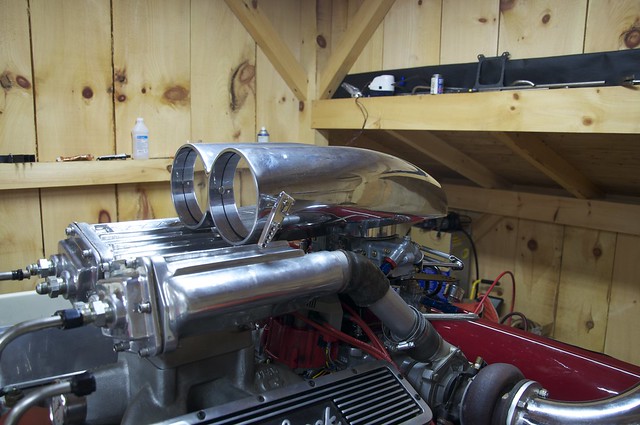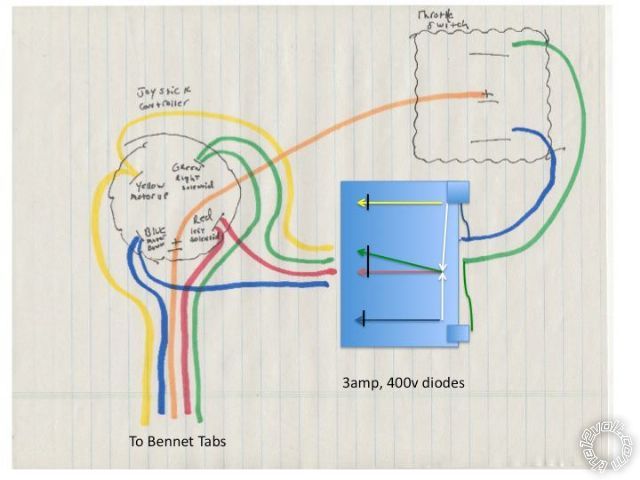I have been searching high and low for an answer to this question.
I have this boat:

It has ride plates that help even the boat out in rough water or at high speed. There is a little joystick which controls each of the plates, but at high speed, you don't want to be reaching down to mess with it. So, I have a switch built into the throttle that will make both of them go up and down.
I finally came up with an idea I thought would work...that would let both the joystick be fully functional and the throttle to move both tabs up or down.
It works...to a degree. One of the solenoids must be a little dodgier than the other because when you use the joystick, they both go up and down no problem. When I use the throttle switch, one of the tabs goes up and down no problem while the other one goes some times.
I have only tried this on the trailer and it looks like the switch gets 12.5 volts, after the switch about 11, after the diodes about 10. It is possible with the boat running, it won't be an issue, but I was wondering is any one might have some other ideas...maybe putting in a couple capacitors or something?

Any help would be greatly appreciated!
A 1.5V drop across a switch is bad. Check again or change it.
Diodes normally have ~0.6V-0.7V, but 1V is ok (the drop depends on current, and diode type - ie, Schottky diodes are ~0.3V compared to ~0.6V for "silicon").
[ A switch should be a short circuit - ie, clean copper or silver etc contacts with voltage drops measure in milli-Volts (2mV - 10mV etc).
If the switch was passing 2A with a 1.5V drop, that's P=VI = 1.5V x 2A = 3W of heat, a bit more heat than a 3W bulb (assuming 5% incandescent bulb lighting efficiency). ]

